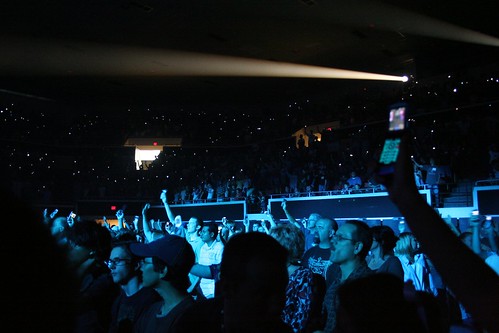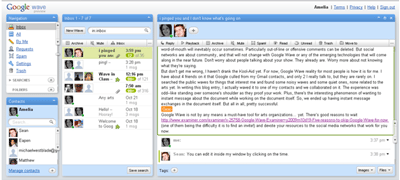Corwin wrote a great post a month or two ago about the new technologies that museums have started to implement to increase interactivity with their patrons. I thought it might be interesting to explore the performing arts side of things. Two things inspired me think about this:

Cell phone usage is a big issue for everyone in the theatre world, especially for audience members. At most theatres, it’s house management’s responsibility to keep the peace, and they have good reasons to want the audience trained to turn off their cell phone before curtain (More on texting at the theatre on Arts Journal). At this point we’ve all had an experience, whether it be a movie, church service, class or performance, interrupted by someone’s phone ringing or someone “innocently” texting. (And, although loathe to admit it, many of us have experienced the embarrassment of being “that guy” whose phone serendipitously screeches at the worst possible moment!) In researching this post, whenever I read an article on cell phone distractions in the theatre, there were often 10 or more comments by people voicing their frustration about the rude text-er or Twitter in the row in front of them who ruined their night. And it’s not just the other audience members who get distracted. In the theatre where I used to work, actors would regularly complain of being distracted by the LCD lights when audience members texted. Many of us have seen the now-infamous video of Hugh Jackman and Daniel Craig in “A Steady Rain”, where Jackman berates an audience member whose cell phone went off during the performance.
Hugh Jackman and Daniel Craig in “A Steady Rain”
Some arts organizations go to great lengths to achieve cell-phone-free evenings—cell phone use during a performance has been illegal in New York City since 2003. Here in Pittsburgh, we try a more subtle, almost subliminal approach. A friend told me a story this weekend about an arts org that used to play a cell phone ring over the PA system a minute or two before the pre-show announcements. It sounded like it was just some one’s phone in the back of theatre. My friend thought this was sort of a wacky idea, until one night he sat in the balcony and saw everyone whipping out their phones to turn them off.
But I digress. As texting delivery systems get more commonplace and affordable, arts managers now have the capability to reach out to audiences in new ways about the art that they are experiencing. Some would argue that mobile technology use could be one way to further your mission to reach or unite your local community around art. Unfortunately, this sometimes causes direct conflict with the artistic and house staff. Now, I am not trying to paint these segments of the arts org world as out-of-touch with technology; I’ve seen these departments embrace other technologies in creative and wonderful ways. Ticket scanners save ushers a lot of hassle. And advances in stagecraft technology make for some spectacular productions.
But they have a point. When you take your personal technology into the performance with you to enhance the performance, it begs the question: shouldn’t the performance be enough? The art has stood on its own for, in some cases, hundreds of years, aided only by program notes and, in the past few years, by supertitles in the case of opera. Perhaps this is the argument for the new technology—that old art must stay current with its audience, who may not know to clap between pieces, but not between movements. Or have their understanding enhanced by knowing that Mahler wrote the song cycle after the death of his two children and perhaps that is why it is so depressing. (Sidenote: does anyone else find it interesting that the endings to operas are nearly always included in the synopsis in the program notes, but never the endings to plays?) Personally I love to read program notes, especially the articles about the lives of the artists. But while I’m watching Troy and Rose Maxson argue in Fences, will a text telling me that August Wilson married three times enhance my theatre experience or merely distract me from the drama onstage?
Can a performing arts venue add interactivity during performances without distracting other patrons and performers? And without inciting a riot amongst house and artistic staff?
I’m really interested to know your thoughts, opinions and experiences with this issue; we’re planning on making this a two-parter, discussing ways mobile technology can enhance enjoyment of performances next week.






